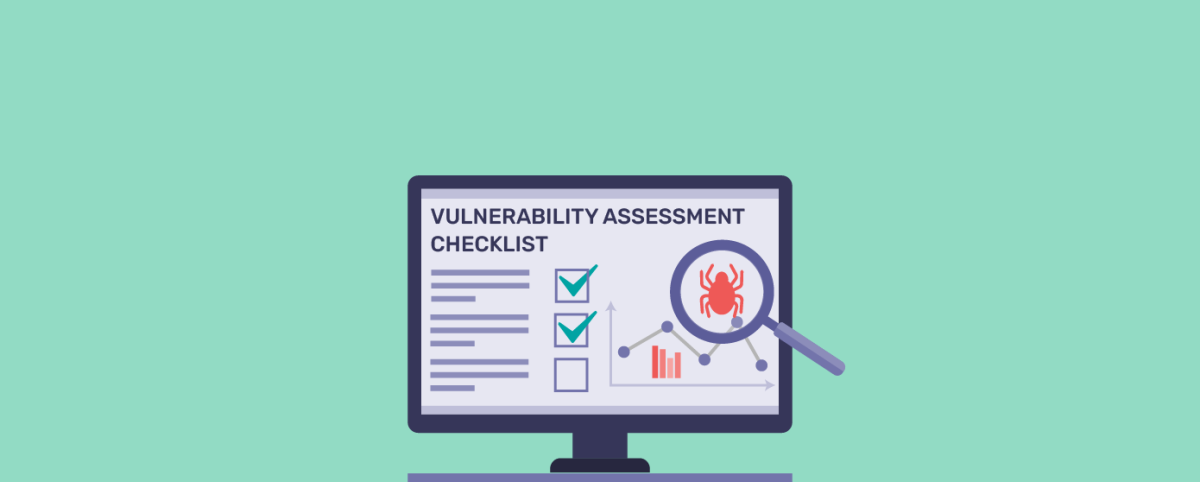How to Conduct A Vulnerability Assessment?
In today’s day and age of digital transformation and increasing digital interconnectedness, cyber-attacks, and cybercrimes are the biggest risks facing businesses and customers alike. Case in point – There has been a 127% increase in the number of consumer records containing sensitive personal information stolen (447 million in total) in the US in 2018 in comparison to the 2017 figures. Nearly 50% of small businesses in the US have faced some form of cyberattack and 60% of them have gone out of business within the next 6 months.
For any risk to be effectively mitigated, it needs to be identified and its magnitude and possible outcomes assessed for a strong mitigation and defense strategy to be formulated. And cyber-risks are no different. For businesses to improve their security posture and mitigate cyber-risks effectively, they must conduct regular vulnerability scanning and assessments and use the findings to continuously sharpen their security strategy.
What is a vulnerability assessment?
Vulnerability assessment is the process of scanning and identifying all systems and parts of your website/ web application for vulnerabilities and assessing the nature and potential of a successful exploit of the vulnerabilities. They enable the business and the security team to prioritize the critical assets and focus most on their protection against potential threats. Vulnerability assessment tools include web vulnerability scanners, assessment software, network scanning software, pen-testing, protocol scanners, etc.
Vulnerability scanning is but a part of the vulnerability assessment process. Scanning helps businesses to identify known vulnerabilities and weaknesses in the websites/ web applications and affiliated systems. They are an effective first step towards vulnerability management and understanding the baseline of security risks. Scanning can never be a singular and sufficient solution for website security.
Scanning has to be followed with risk assessment and evaluation, pen-testing and security audits and needs to be part of a comprehensive, intelligent and robust security solution such as AppTrana to ensure that the business and its customers/ users are well-protected from the biggest risk facing them and ensure better cybersecurity.
How to conduct vulnerability assessments?
Vulnerability assessments are done right will ensure that your precious resources are judiciously and prudently allocated to protect your websites/ web applications and digital assets. There are 6 steps to it:
Understand your business profile and unique security needs
Businesses, their cyber-risks, risk profile and appetite, and their need for cybersecurity are unique and a one-size-fits-all approach does not work. Any web security solution must always start with the business profile, its impact on security and security needs. Onboard security experts like those at AppTrana who can understand your needs best and thereon, custom design your vulnerability assessment and website security solution with surgical accuracy.
Planning
You must identify, analyze and map out all the digital assets, systems, affiliated systems, networks, IT infrastructure, devices used, applications, etc. that are used and if (and how) they are interconnected). Determine where sensitive data and critical assets reside and make sure to look for and include hidden data sources (placed in a private cloud network, etc.). Review all ports, processes, services, and policies to check for misconfigurations. This will help you get a holistic picture of your business’ IT assets.
Scanning
Based on the risk profile, security posture, and the other findings from the previous step, the scanning tool, and rules for scanning need to be customized and tuned. Once this is done, actively vulnerability scanning needs to be done, preferably using an automated and intelligent tool, to check for known vulnerabilities, weaknesses, loopholes, flaws, etc.
Scanning needs to be done on an everyday basis and after any major changes in the business policies or website design, etc. and scanning rules need to be continuously tuned. The security solution should also ensure zero false positives and should continuously filter them out.
Scan Report and Analysis
The scanning tool must provide a detailed and customizable report with a list of vulnerabilities, weaknesses, etc. Conduct a detailed analysis of the report to assess the causes, magnitude, and potential impact of the vulnerabilities. Prioritize the vulnerabilities by ranking them according to urgency, severity, risk, and potential damage.
Pen-testing and security audits
Pen-testing and security audits on a quarterly basis are a must to ensure that you effectively identify unknown vulnerabilities, business logic flaws, and other weaknesses that automated scanning tools miss. This will help strengthen your security posture further.
Remediation
The last step in any vulnerability assessment must be remediation. Remediation must be based on the priorities set during the analysis step. So, vulnerability assessment tools must be linked to remediation tools such as Indusface WAF to heighten website security.
Vulnerability assessments need to be continuous and consistent to ensure better cybersecurity.

 October 29, 2019
October 29, 2019






